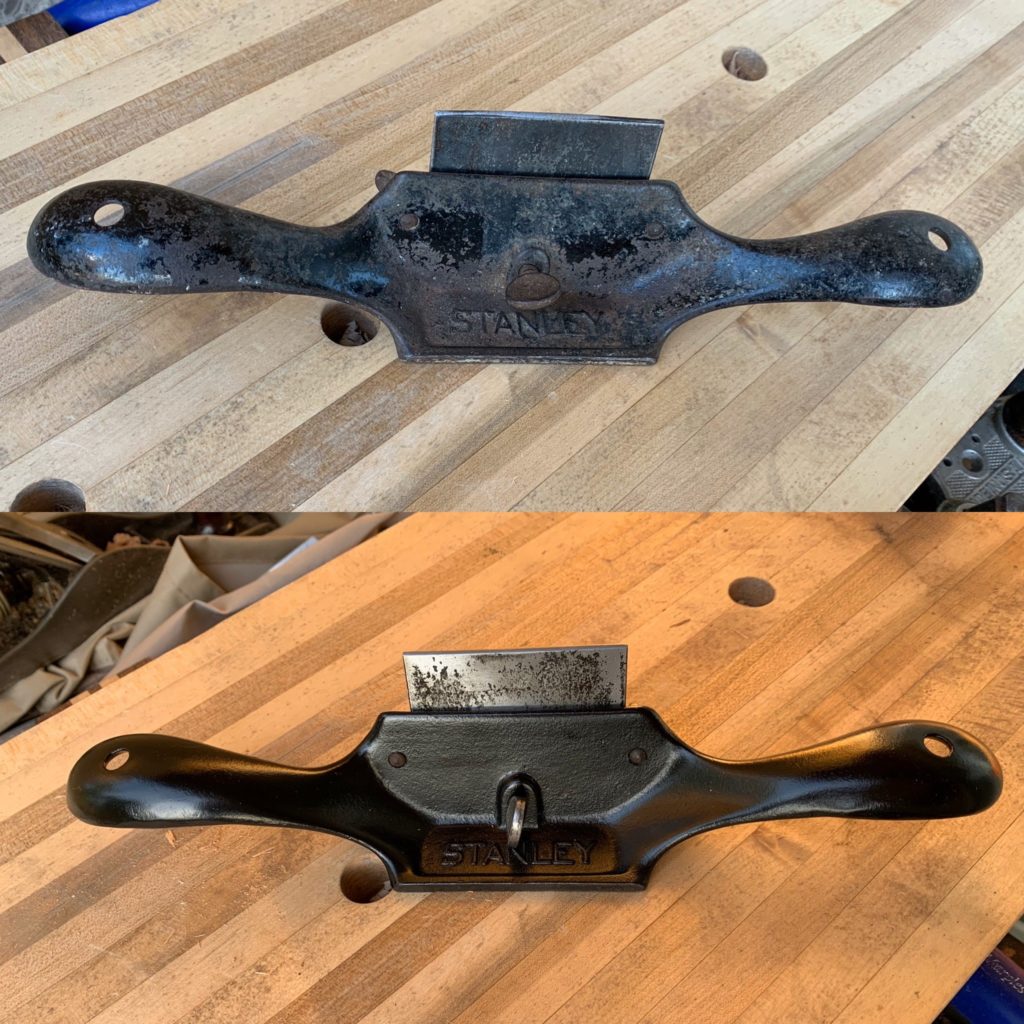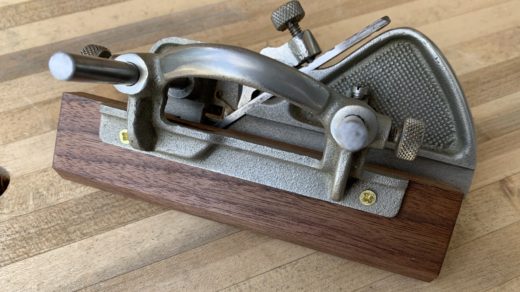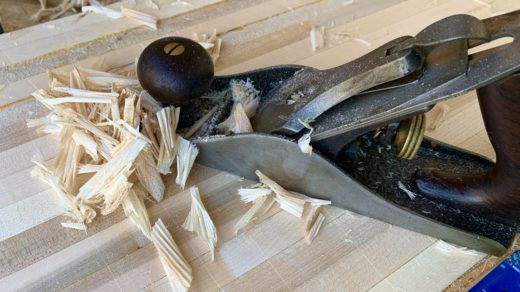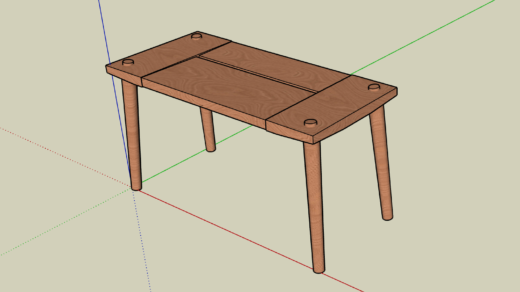I bought a Stanley No. 80 cabinet scraper in rough shape a while back. It is perfectly functional in its condition and I have used it on several projects where the grain was prone to tear out. I had a piece of white oak that would tear out no matter how I approached it with a regular plane. Cabinet scrapers are perfect for these situations and also for final finishing to give wood a beautifully smooth surface. The scraper I have, while fully functional, was not really a joy to use due to its rusty handles and chipped paint.
I finally decided to set aside some time to restore it to its former glory. I don’t usually touch the paint (or “japanning” as it is known) when restoring tools but this one was in pretty bad condition so I decided to do a more thorough restore. That means stripping the japanning and repainting. This is what the plane looked like:
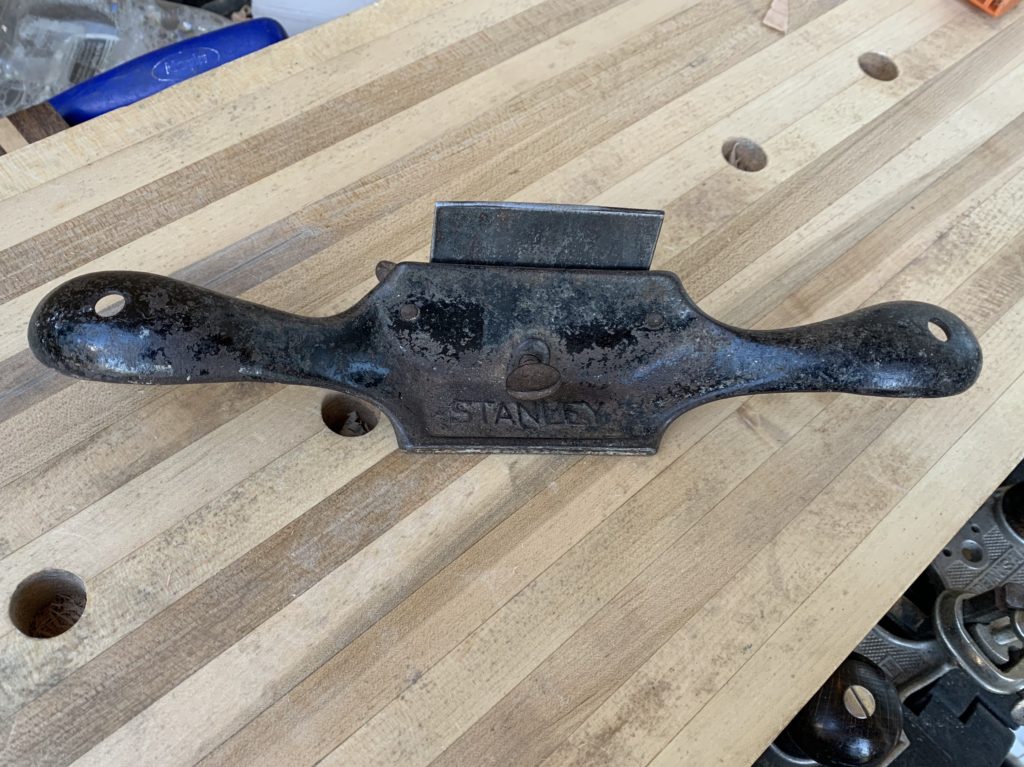
I strip the paint with Citrustrip by applying a coat and leaving it on for about an hour.
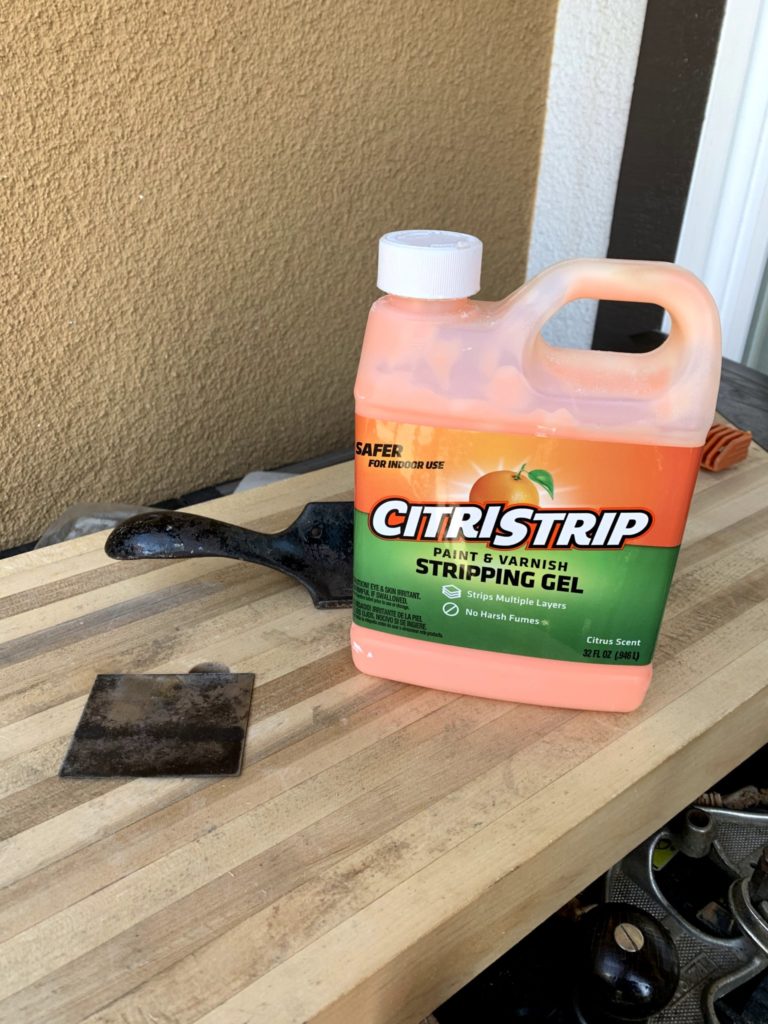
Then I sand off the japanning with 220 grit sandpaper.
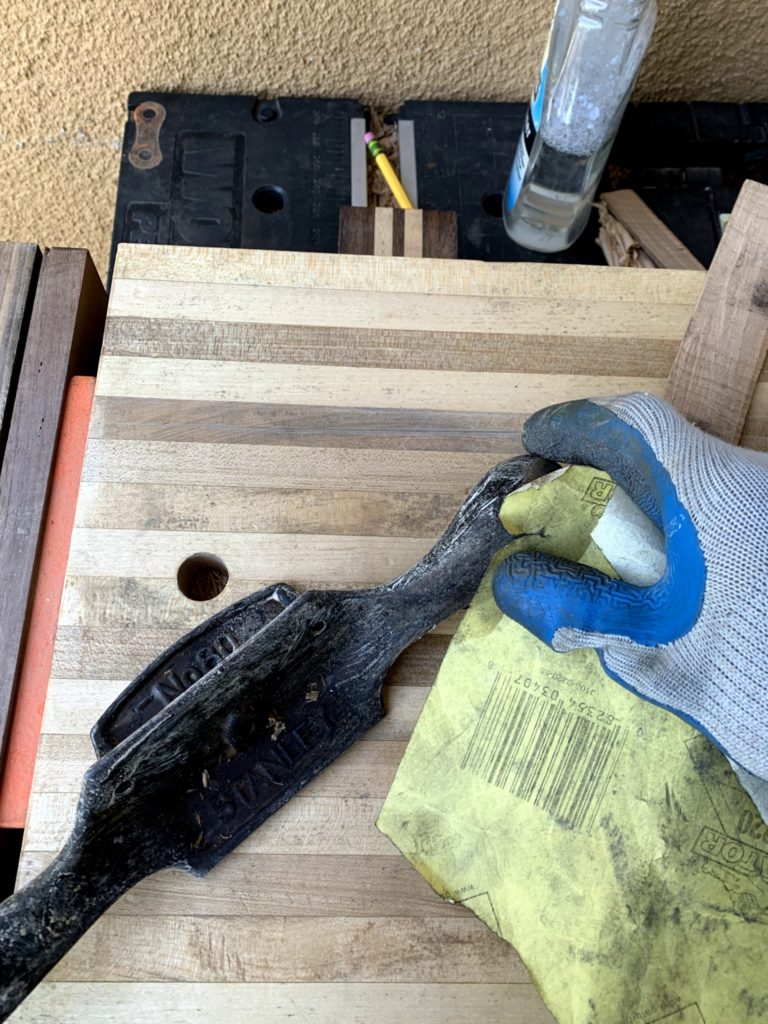
Once the paint has been completely stripped the plane is ready for finishing. Genuine japanning is a complicated (and toxic) process so I went with an alternative that I’ve seen others use with success. Supposedly, spray-on engine enamel approximates the appearance of japanning well. A can of black semigloss Duplicolor engine enamel is only $5 so I decided to give it a try.
First I tape off the sole of the plane and screw holes I don’t want paint to get in.

I apply two coats of paint, with about half an hour between the coats. The paint will be dry enough to handle after an hour but won’t fully dry for a week. You can tell that the surface is slight gummy when it has not fully cured.
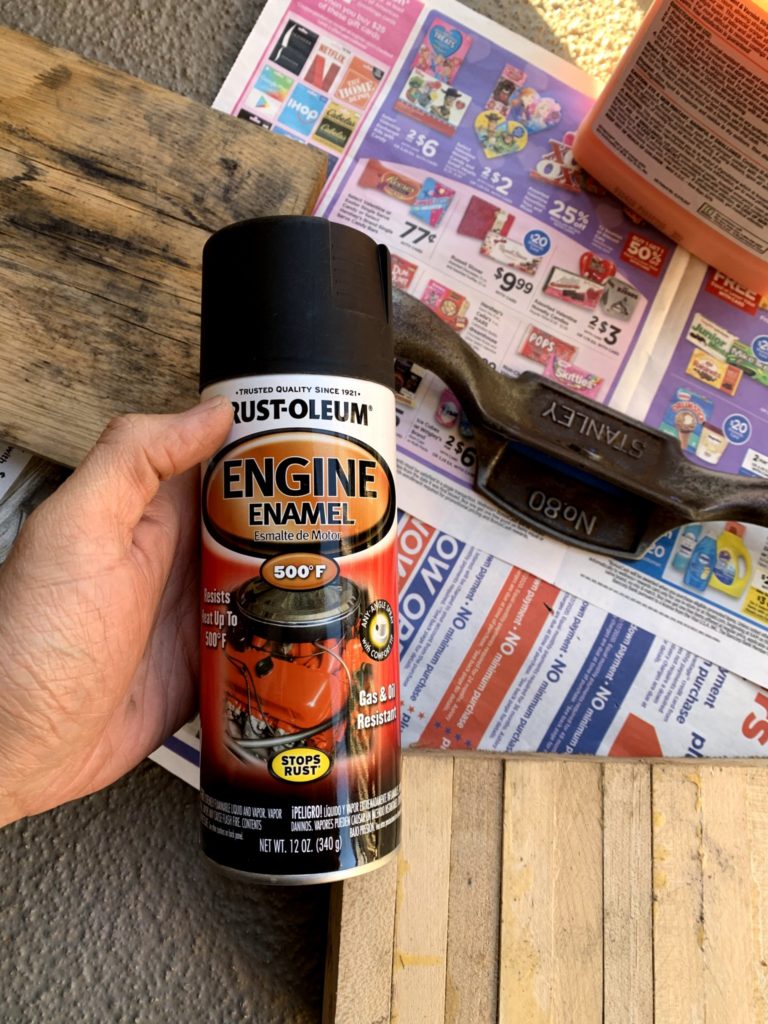
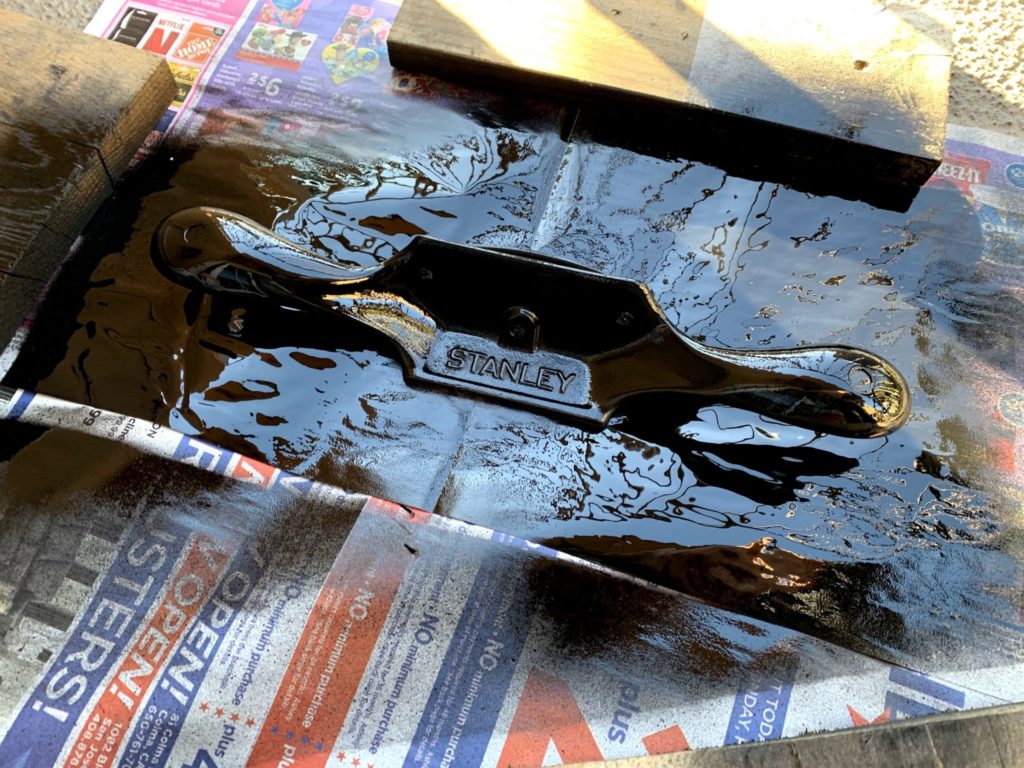
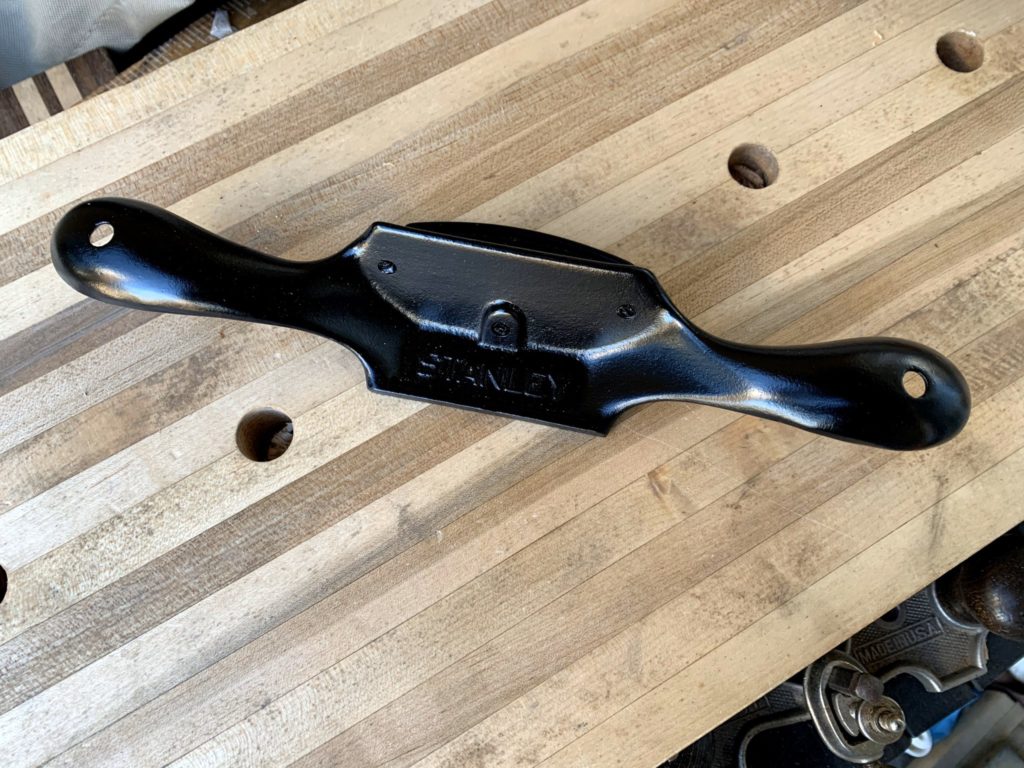
Now moving on to the scraper blade. I start by flattening both sides with the sharpening stones, first on the coarse stone, eventually moving up to the fine.
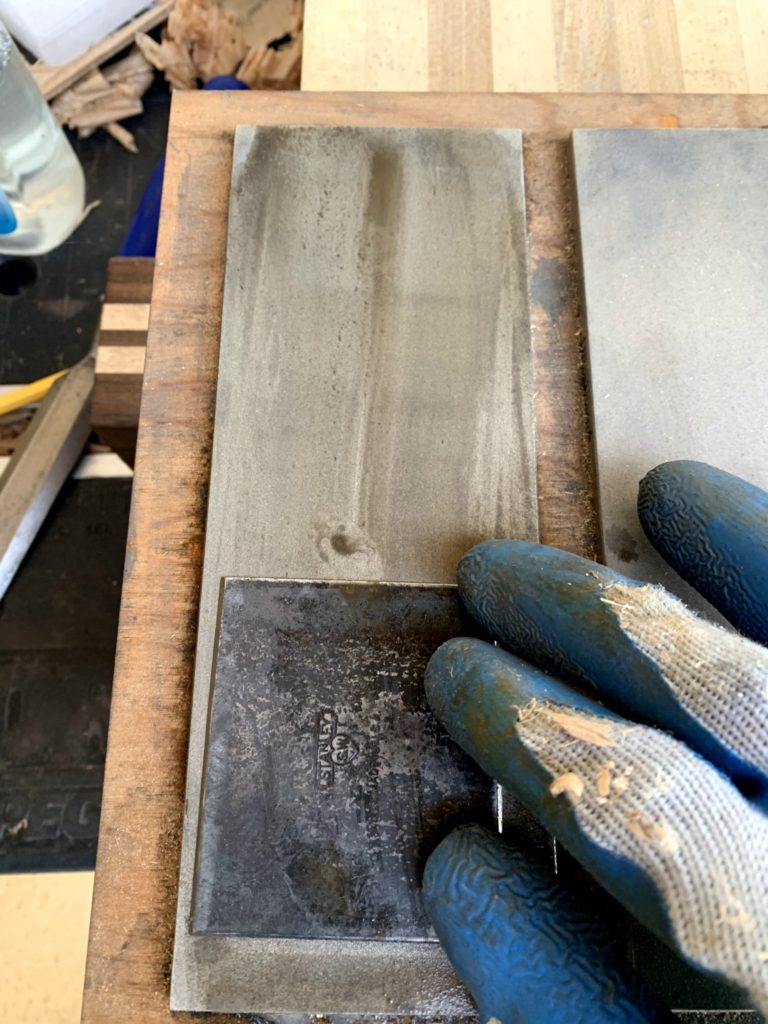

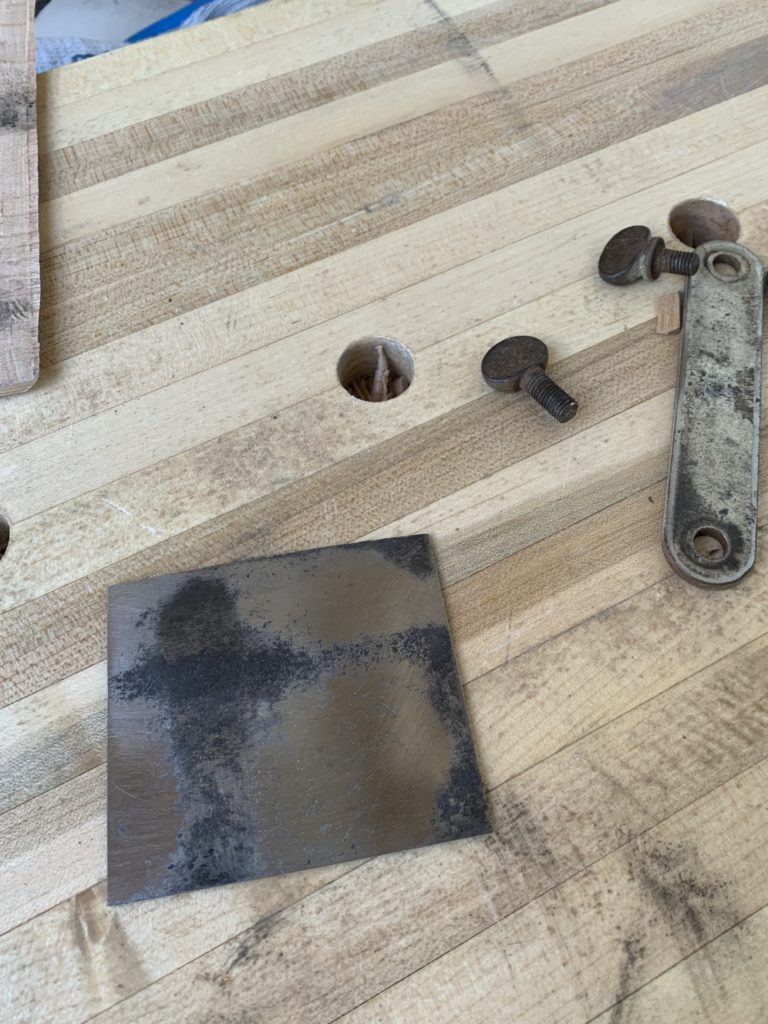
I file the edge of the blade at a 45 degree bevel, while ensuring that the edge is perfectly straight.
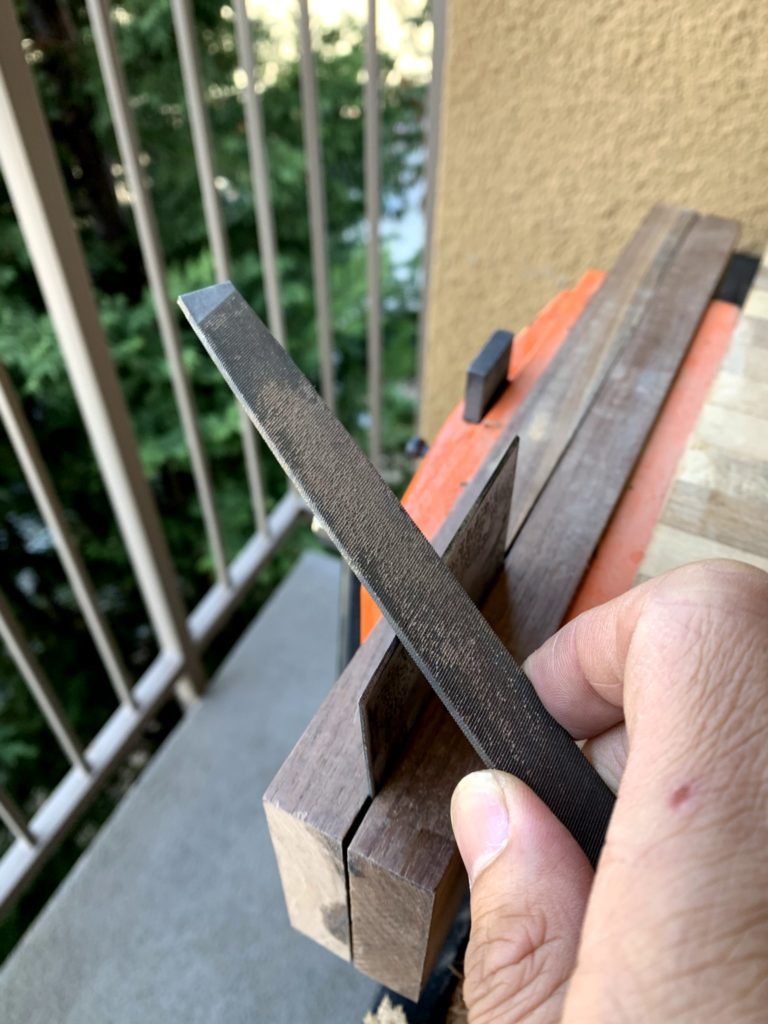
I clean up the hardware by leaving it in a vinegar bath for an hour and sanding off the rust with 320 grit sand paper.
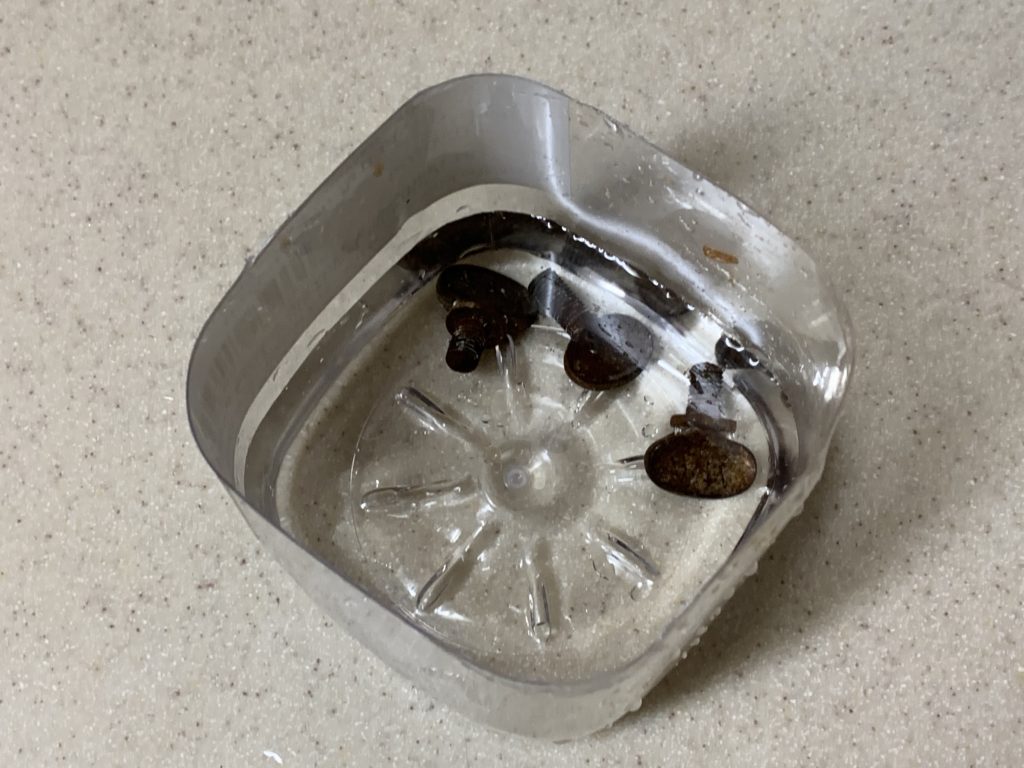
After the paint has fully dried, I flatten the sole of the plane on some 180 grit sandpaper on a flat granite tile.
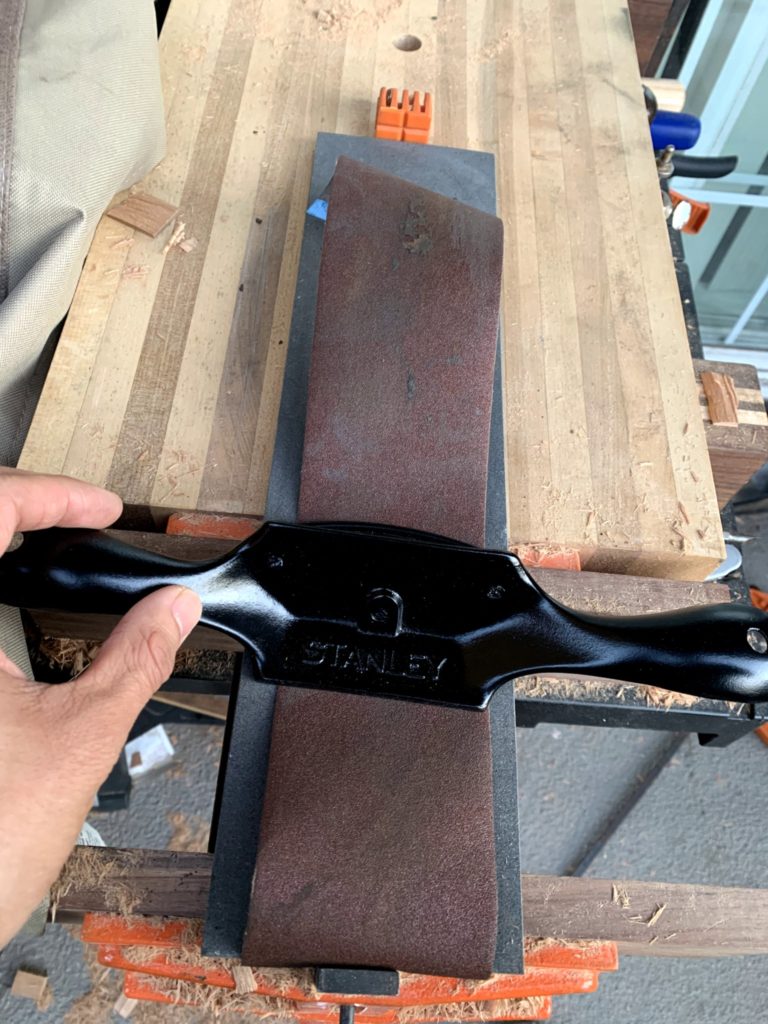
Finally it’s time to reassemble the plane! I’m really happy with the way it turned out. I now have a tool that works beautifully but is beautiful to look at as well. Here is a before and after comparison:
